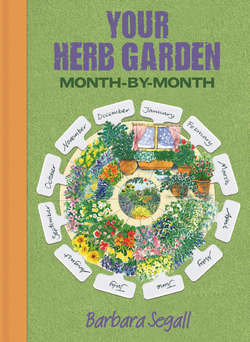Читать книгу Your Herb Garden - Barbara Segall - Страница 51
На сайте Литреса книга снята с продажи.
CANARY BALM
Оглавление(Cedronella canariensis – Labiatae)
Aromatic leaves and dome-shaped heads of small pink flowers are the attractions of canary balm. It grows well indoors and in sunny sheltered sites outdoors.
| type | Half-hardy shrub |
| flowers | Pink to mauve heads of small tubular flowers from late summer through to early autumn |
| leaves | Musk and citrus-scented matt-green leaves are divided into three oval-shaped, pointed leaflets with toothed edges which grow along square stems |
| height | 1m (3ft) |
| spread | 1.2m (4ft) |
| planting | Sow seed in spring or grow from rooted cuttings. Protect plants by growing in pots and overwintering indoors in cold areas |
| position | Full sun |
| soil | Well-drained loam |
| care | Plants grown in pots may need support in their first year. In their second year stems become strong and woody. Water plants in containers frequently. Bring container-grown plants indoors in winter or protect with mulch and hessian netting cover |
| propagation | Sow seed in spring or take stem cuttings in autumn |
| species and varieties | Canary balm is sometimes sold as False Balm of Gilead or Balm of Gilead (Cedronella tryphylla) |
| harvest | Pick leaves before flowers appear and dry to use in pot-pourri. Harvest flowers as they open from summer to autumn |
| herbal value | Crush dried leaves to use in potpourri. Use fresh leaves to make an aromatic hand- or facewash. Add whole dried flowers to pot-pourri. The whole plant is useful as a decorative and fragrant indoor or conservatory plant |
